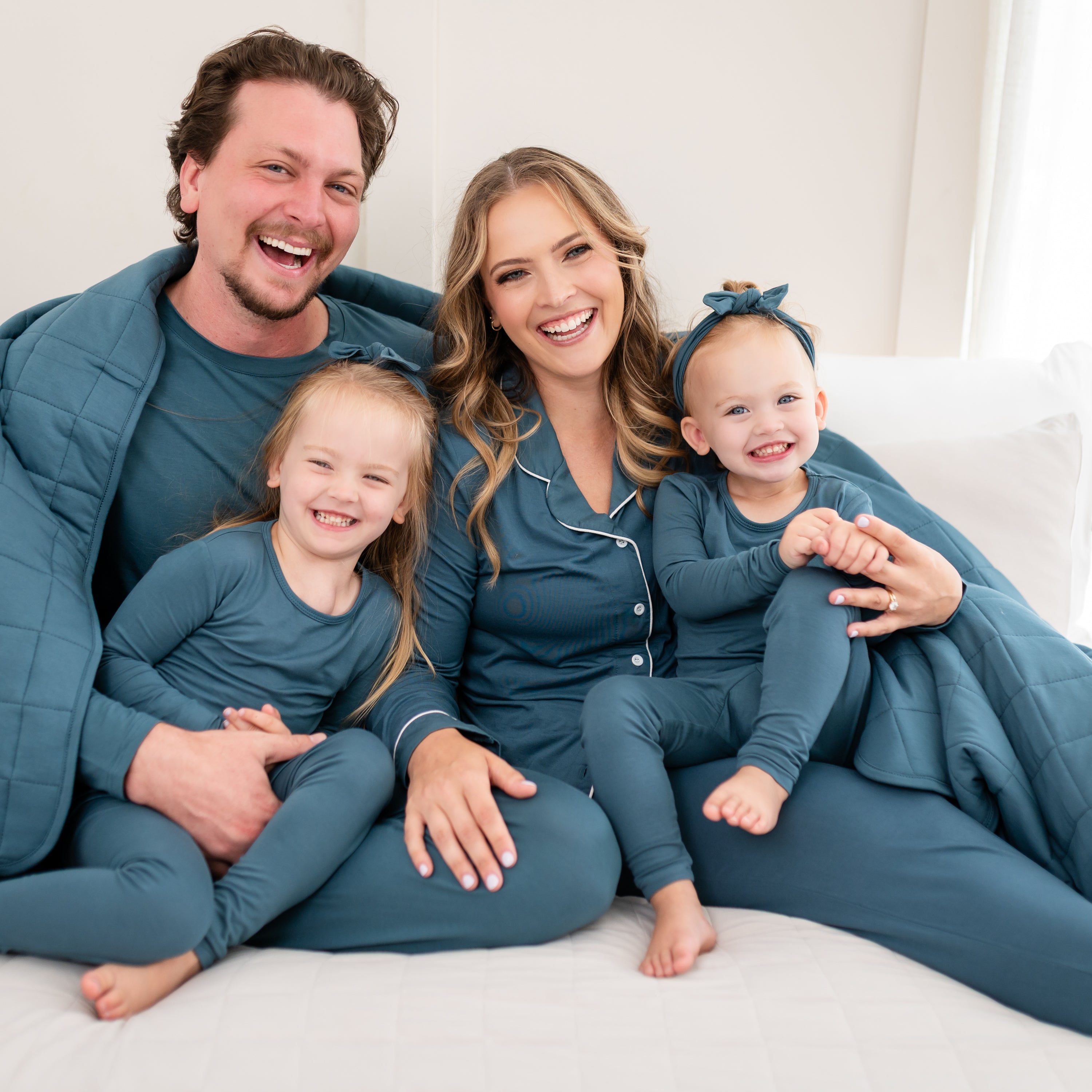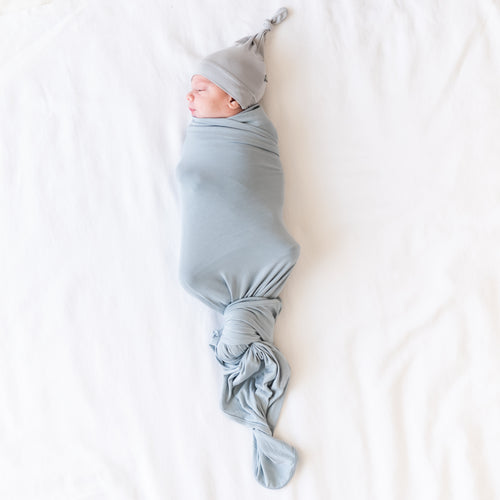
If you’ve ever Googled anything about baby sleep (which, if you’re a parent, you 100% have), you’ve most likely come across the phrases “wake times” or “wake windows.” A wake window refers to the length of time between sleeps, or the length of time a child is awake before they take a nap or go to bed.
Newborns have very short wake windows, which means they can’t spend more than an hour or so awake before they need to nap again. As babies grow older, their wake windows lengthen, allowing them to stay awake for longer periods of time. The reason why tracking your baby’s wake windows can be helpful is because that “sweet spot” when they’ve been awake for just the right amount of time before being overtired can be the key to a good nap and even independent sleep.
The only problem is that wake windows aren’t an evidence-based practice, meaning there’s no standard of use for them. They’re based on averages, and that’s why you see different ranges for different ages. Depending on the specific sleep needs of your baby, their perfect wake window may be much shorter or longer than the perfect wake window for another baby who’s the same age. Still, wake windows by age are a useful tool as long as you continue to tune into your child and what they need for sleep.
How are Wake Windows Determined?
Wake windows work with the science of sleep pressure. Sleep pressure builds while we are awake, it’s eliminated while we sleep, and the cycle continues throughout the day. This is mainly fueled by adenosine for daytime sleep and then melatonin and circadian rhythm for nighttime sleep.
Sleep pressure builds quickly for young babies and slows down as your child gets older. That’s why wake windows are short for newborns and longer for toddlers.

Guideline for Wake Windows by Age
- Newborn to 8 weeks: 45-60 minutes
- 8-12 weeks: 60-90 minutes
- 12-16 weeks: 1.5-1.75 hours
- 4-6 months: 2-2.5 hours
- 6-9 months: 2.5-3 hours
- 9-12 months: 3-4 hours
- 12-18 months: 3.5-5.5 hours
- 18-24 months: 5-6 hours
- 2+ years: 5-6+ hours

The beauty of using wake windows by age is that they give you some flexibility during the day. If your child takes a long nap, you just calculate their next wake window and put them down for their next nap or bedtime based on how long their awake time is.
If your child has a short nap, you can do the same thing. It allows you to adjust naps and bedtime based on your child’s sleep without risking them getting super overtired or fighting sleep because they’re undertired.
You also don’t need to shorten an awake period for a short nap; this can create a short nap/short wake period/short nap cycle, which can then lead to overtiredness. It’s best to have a full wake window when possible to allow the sleep pressure to build adequately for the next wake period. This allows your child to take a potentially better nap following the not-so-great nap.

When Should Baby Go to Bed?
So often, I see bedtime recommended by a specific time, rather than one that follows a wake period from their last nap. For instance, if your child, who has a 3-hour wake time, wakes up early from a nap at 3pm, their bedtime should be at 6pm. Putting them down at their “normal” bedtime of 7pm can lead to overtiredness, which can then disrupt their nighttime sleep and cause early wakings.

Here is the only evidence-based resource we have for sleep needs for optimal health:
- Infants four to 12 months should sleep 12 to 16 hours per 24 hours (including naps)
- Children one to two years of age should sleep 11 to 14 hours per 24 hours (including naps)
- Children three to five years of age should sleep 10 to 13 hours per 24 hours (including naps)
- Children six to 12 years of age should sleep nine to 12 hours per 24 hours
- Teenagers 13 to 18 years of age should sleep eight to 10 hours per 24 hours

What if my Child is Really Struggling with Bedtime?
That could be an indication that the timing is off. You can make changes in 15- to 30-minute increments to see if that helps to find the “sweet spot” for timing.
Some other tips for helping eliminate the bedtime struggle are:
- Using routine charts/visual cards
- Giving them choices within the routine
- Alternating which parent puts them to bed
- Narrating the process
- Using timers
- Making the routine a game (who can get dressed the fastest?)
- No screens within the hour before bed
- Plenty of sunshine early in the day
- Limiting sugar after dinner (interrupts melatonin)
Bedtime Fading May Ease Rough Bedtimes
If you’ve tried all of that and bedtime is still a nightmare, try bedtime fading!
A trial of bedtime fading by Flinders University Child and Adolescent Sleep Clinic experimented with 21 children between 18 months and four years of age who were known to have difficulty initiating sleep, night waking, or a combination of both. Mothers took part in two group sessions that included basic sleep education and bedtime fading instruction. The study found great improvements in the sleep patterns of the children, with a reduction in the time taken to get to sleep, a reduction in the time children woke up in the night, and also a significant reduction of tantrums associated with bedtime.
How to do Bedtime Fading
- Log sleep to find when your child is typically going to sleep
- Use that time as the temporary bedtime, even if it’s late (like 10pm)
- Watch for sleep cues (fussing, rubbing eyes, pulling on ears, red eyebrows, tantrums, yawning)
- Start your bedtime routine
- Offer comfort if they’re upset
- Shift bedtime every few nights, moving it 15 minutes earlier until you’ve reached your new bedtime
- If, at any point, your child has a difficult time, go back 15 mins and hold there for a few days until you’re ready to try the earlier bedtime again
This can be a simple strategy to help eliminate your bedtime battles. Timing is definitely an important part of the puzzle when we look at sleep from a scientific and biological standpoint. But sometimes, it takes a little experimenting to get there!
AUTHOR:
Ashley Olson is a certified pediatric sleep consultant, owner of Heaven Sent Sleep, and passionate about helping new parents, experienced parents, desperate and sleep deprived parents form healthy sleep habits for their children.
She has over 4 years of experience in working with families and has completed over 150 hours of coursework plus continuing education related to infant and toddler sleep. The focus of her work is on fostering a routine that grows your bond and attachment with your child while improving their sleep habits. She specializes in custom sleep plans and one on one support in changing sleep practices!
























